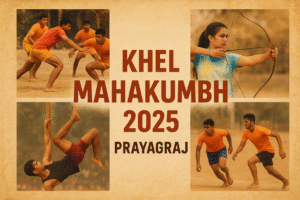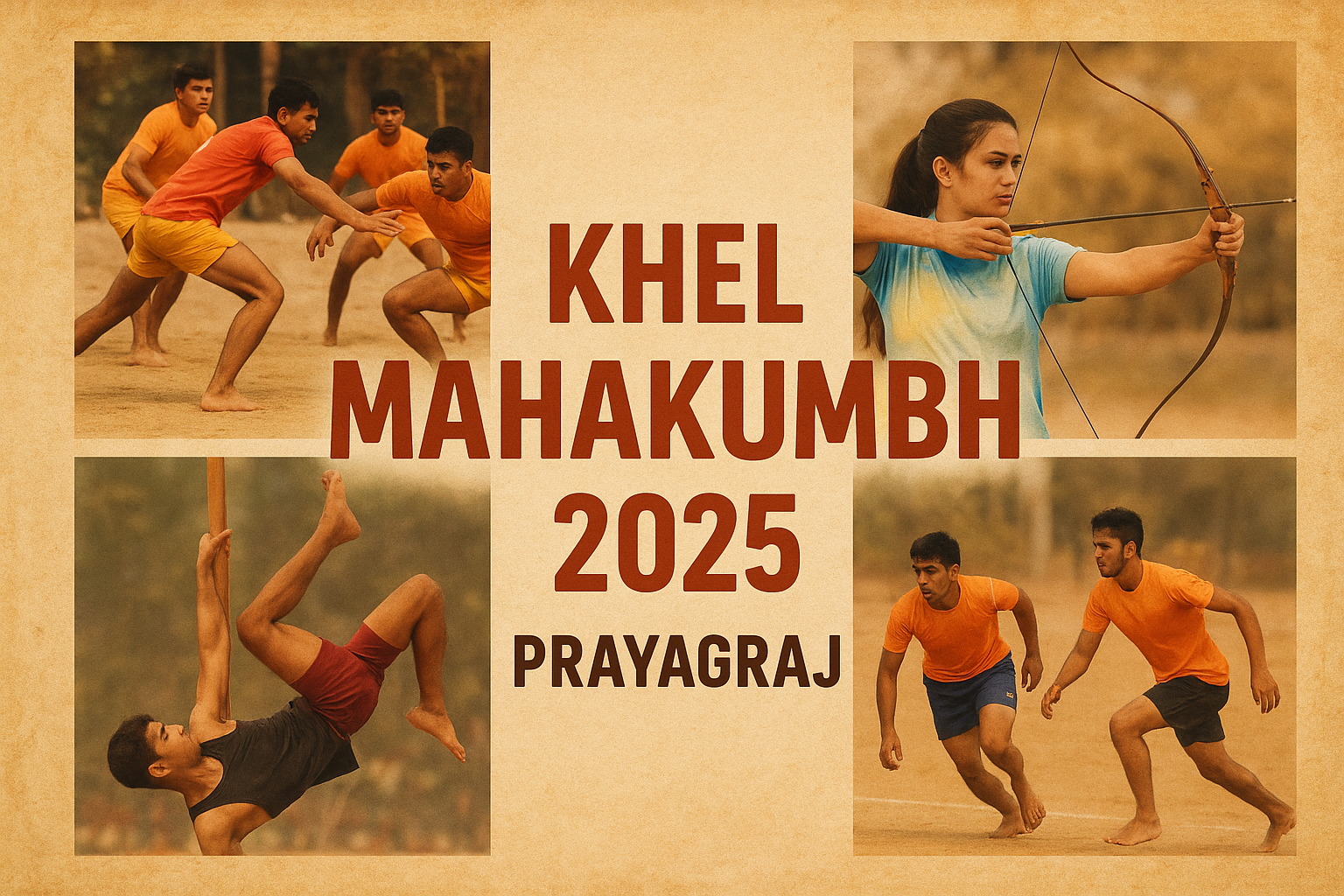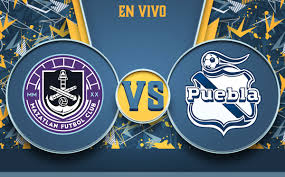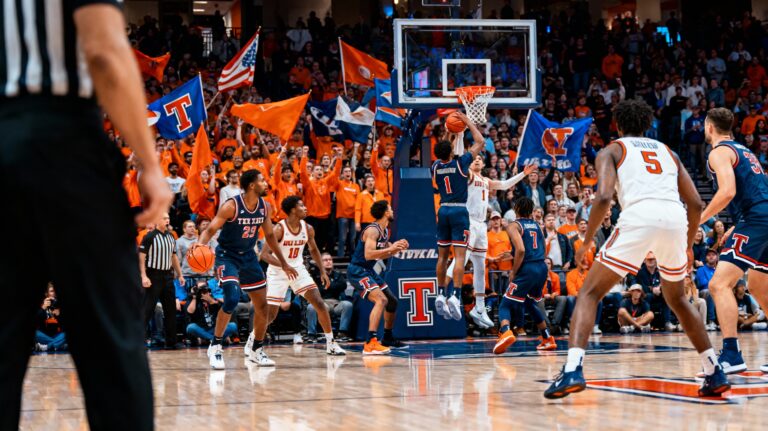Khel Mahakumbh 2025 in Prayagraj: Reviving India’s Traditional Sports
Khel Mahakumbh 2025: A Grand Celebration of India’s Sporting Heritage
India has always been a land where sports and culture go hand in hand. From ancient wrestling akhadas to vibrant games like kabaddi and kho-kho, traditional sports have shaped not only our entertainment but also our identity. In this spirit, Khel Mahakumbh 2025 was organized in Prayagraj, Uttar Pradesh, from 6 to 13 February 2025—bringing together thousands of athletes, coaches, policymakers, and enthusiasts from across the country.

This wasn’t just another sports event. It was a movement to revive indigenous games, empower grassroots talent, and create a national dialogue around sports.
What is Khel Mahakumbh 2025?
Khel Mahakumbh 2025 was a week-long sporting festival and dialogue platform that celebrated India’s traditional games alongside modern sporting discussions. Organized by Kreeda Bharati in collaboration with TYC Communication and strongly supported by the Government of Uttar Pradesh, the event attracted participation from 28 states and 8 Union Territories.
The uniqueness of Khel Mahakumbh lies in its two-fold vision:
-
To revive and popularize traditional Indian sports like Mallakhamb, Kabaddi, Kho-Kho, and Archery.
-
To shape the future of sports in India through interactive sessions (Samvaads) with athletes, policymakers, nutritionists, sports journalists, and coaches.
Highlights of Khel Mahakumbh 2025
1. Grand Opening at Sangam Kshetra, Prayagraj
The event kicked off with colorful performances and the unveiling of the official logo by Chief Minister Yogi Adityanath. The venue, set along the sacred Sangam in Prayagraj, symbolized the fusion of culture, heritage, and athletic spirit.
2. Sports Competitions that Revived Tradition
Some of India’s most beloved traditional sports were brought back into the spotlight with professional-level competitions:
-
Kabaddi (6–8 Feb): Junior and Senior categories, with cash prizes of ₹25,000 and ₹51,000 respectively. The matches were intense, highlighting raw athleticism and team strategy.
-
Mallakhamb (8–9 Feb): Participants amazed the crowd with their gravity-defying performances on the pole and rope, blending strength, flexibility, and artistry.
-
Archery (10–12 Feb): Open categories for men and women tested precision and focus, with top winners receiving ₹51,000 each.
-
Kho-Kho (10–12 Feb): This fast-paced chase game had spectators on the edge of their seats, reminding everyone why kho-kho is one of India’s most loved schoolyard sports.
3. Samvaad Sangam – Dialogue for the Future
Beyond the competitions, Khel Mahakumbh hosted thought-provoking discussions on topics such as:
-
How to nurture grassroots talent
-
The role of nutrition and psychology in sports
-
Media’s responsibility in shaping India’s sporting culture
-
The roadmap for taking indigenous sports to the international stage
These sessions made the event not just about winning medals, but about building the future of Indian sports.
4. Cultural Performances & Yoga
Attendees also witnessed martial arts like Kalaripayattu, mass yoga sessions, and folk dance performances, making Khel Mahakumbh as much a cultural festival as a sports event.
5. Awards & Recognition
More than 100 champions, coaches, institutions, and journalists were honored for their contributions to Indian sports. These recognitions encouraged unsung heroes who often work behind the scenes to shape athletes’ careers.
Why Khel Mahakumbh 2025 Matters
-
Reviving Heritage: Sports like Mallakhamb and Kho-Kho don’t often find space on big platforms. Khel Mahakumbh gave them the stage they deserve.
-
Grassroots Empowerment: The event opened doors for rural and underprivileged athletes to showcase their skills.
-
Inclusive Participation: Differently-abled athletes and women were actively encouraged, ensuring representation across society.
-
Future-Oriented Approach: The focus was not only on competition but also on creating policies, ideas, and opportunities to strengthen India’s sporting ecosystem.
Government’s Role & Support
The Government of Uttar Pradesh played a pivotal role in making the event a success. Chief Minister Yogi Adityanath emphasized that Khel Mahakumbh will be a recurring model for promoting traditional sports at the state, national, and global level. Union Sports Minister Anurag Thakur also highlighted that India must aim to take indigenous games to international recognition, perhaps even to the Olympics in the future.
The Legacy of Khel Mahakumbh 2025
Khel Mahakumbh 2025 is not just about what happened in one week at Prayagraj—it’s about what it set in motion. The event created a roadmap for:
-
Building training academies for indigenous sports
-
Integrating traditional games into school and college curriculums
-
Encouraging corporate sponsorship and media attention towards non-cricket sports
-
Inspiring the youth to take pride in India’s heritage while pursuing professional sporting careers
In many ways, this Mahakumbh of sports is similar to the spiritual Kumbh Mela—it is a gathering of faith, but this time, faith in the power of sports to unite and inspire.
Conclusion
Khel Mahakumbh 2025 was more than an event; it was a movement of pride, unity, and progress. It revived India’s glorious past in sports, empowered present-day athletes, and sowed the seeds for a brighter sporting future.
As India moves forward with aspirations of becoming a global sporting powerhouse, initiatives like Khel Mahakumbh remind us that our roots are our greatest strength. And when tradition meets modern ambition, the results can be truly transformative.






